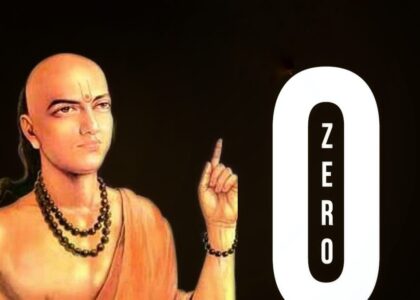Aryabhatta Biography
Aryabhatta is a renowned mathematician and astronomer of ancient India. He was born in 476 CE in Bihar. He studied at the University of Nalanda. One of his major works was Aryabhatiya written in 499 AD.
The book dealt with many topics like astronomy, spherical trigonometry, arithmetic, algebra and plane trigonometry. He jotted his inventions in mathematics and astronomy in verse form. The book was translated into Latin in the 13th century. Through the translated Latin version of the Aryabhattiya, the European mathematicians learned how to calculate the areas of triangles, volumes of spheres as well as how to find out the square and cube root.
Basic Information
Birth- 476 CE
Birth Place- Kusumapura, capital Patalipitra in the Gupta Era.
Present Day- birthplace is known to be Bihar, Patna, India.
Works- His Most Notable work is Aryabhatiya and Arya Siddhanta.
Death- 550 CE
While there is a tendency to misspell his name as “Aryabhatta” by analogy with other names having the “bhatta” suffix, his name is properly spelled Aryabhata: every astronomical text spells his name thus,[12] including Brahmagupta‘s references to him “in more than a hundred places by name”.[2] Furthermore, in most instances “Aryabhatta” would not fit the metre either.[12]
It is fairly certain that, at some point, he went to Kusumapura for advanced studies and lived there for some time.[17] Both Hindu and Buddhist tradition, as well as Bhāskara I (CE 629), identify Kusumapura as Pāṭaliputra, modern Patna.[12] A verse mentions that Aryabhata was the head of an institution (kulapa) at Kusumapura, and, because the university of Nalanda was near Pataliputra at the time and had an astronomical observatory, it is speculated that Aryabhata might have been the head of the Nalanda university as well.[12] Aryabhata is also reputed to have set up an observatory at the Sun temple in Taregana, Bihar.[18
Place value system and zero
The place-value system, first seen in the 3rd-century Bakhshali manuscript, was clearly in place in his work. While he did not use a symbol for zero, the French mathematician Georges Ifrah argues that knowledge of zero was implicit in Aryabhata’s place-value system as a place holder for the powers of ten with null coefficients.[19]
However, Aryabhata did not use the Brahmi numerals. Continuing the Sanskritic tradition from Vedic times, he used letters of the alphabet to denote numbers, expressing quantities, such as the table of sines in a mnemonic form.[20]
Motions of the solar system
Aryabhata correctly insisted that the earth rotates about its axis daily, and that the apparent movement of the stars is a relative motion caused by the rotation of the earth, contrary to the then-prevailing view, that the sky rotated.[22] This is indicated in the first chapter of the Aryabhatiya, where he gives the number of rotations of the earth in a yuga,[30] and made more explicit in his gola chapter:[3
Aryabhata became famous as a mathematician and astronomer. In his only surviving work, Aryabhatiya, he covered a wide range of topics, such as extracting square roots, solving quadratic equations, and predicting eclipses.
Author By:- Muskan



